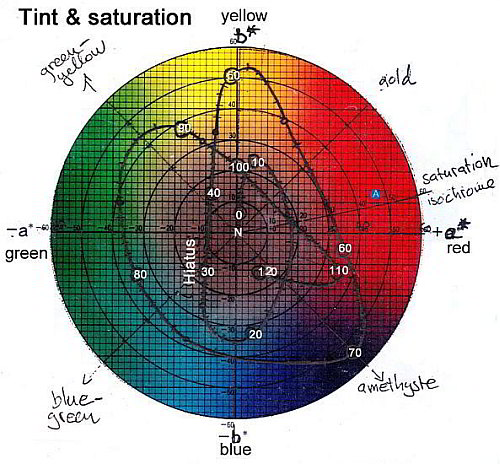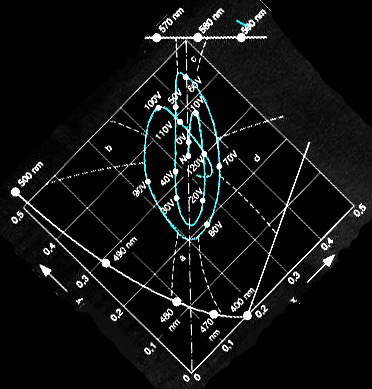
Niobium
Measurements
of Titanium and Niobium
autocoloration vs. DC- voltage
Léo Dubal, PhD
Titanium

Niobium

As noticed by K.
Kimeswenger,
due to the existence of a thin oxide unvisible layer
resulting from thermal corrosion at 300 K, the 0 V point
doesnot match the
Nullpoint N of the CIE-Colordiagram, and until 10 V, where bernstein
color
appears, the curve follows closely the Blue-Yellow-Axis.
This
0-10V dull hiatus
is followed by others, in the ranges 30-45 V and over 115 V,
both for Ti and Nb.
"Chromatique des films minces", Oberfläche / Surface 8, p.16-21 (1989)
"Oxygraphie sur titane", Proc. DECOR 89, AFTS/ARETS/SST, p. 53-55 (1989)
"Dekorative
Farbeffekte auf feuerfesten Metallen",
Proceed. 11. Ulmer Gespräch DGO/VDI p. 93 (1989)
et Galvanotechnik 10 / p.
1665-1667 (1990)
"Dekorieren von Teilen mit Oberflächen aus Niob" , Maschinenmarkt 10, p. 68-73 (1992)